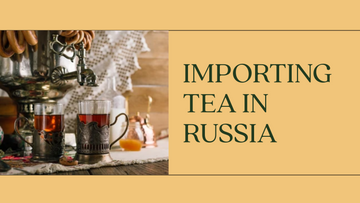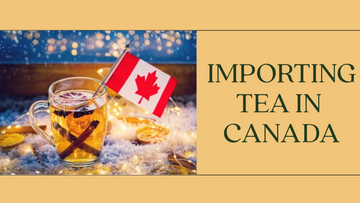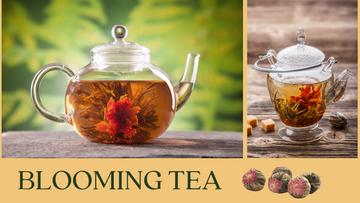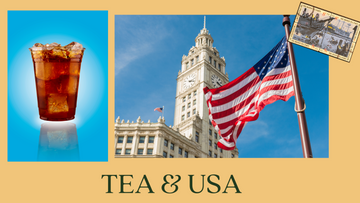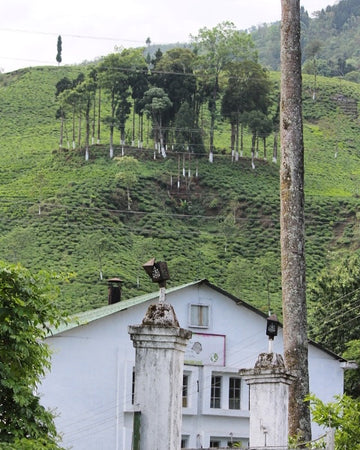
Everything need to know about Darjeeling Teas
A freshly brewed cup of tea is an indispensable part of most households. Tea surely takes the crown away when it comes to its contenders like coffee and other beverages. A cup of tea does not just incite your olfactory and gustatory senses; it has the prowess to uplift your spirits, melt your worries, and has a profusion of health benefits and healing properties.
A perfectly brewed steaming cup of tea can bestow you the ability to kickstart your day on a phenomenal note. Chai can come to your rescue any time of the day when you feel exasperated. It can help you wind down and make you feel rejuvenated in no time. Also, it can help you end your day on a warm and comforting note.
India prides itself on some of the finest versions of tea. After China, India is the largest tea exporter all over the world.
The grandeur of Darjeeling tea

Most of the tea connoisseurs are at home with the Indian teas, and Darjeeling tea is synonymous with joie de vivre for many of them. And, it is no purple prose!
The panoramic tea gardens of Darjeeling are world-famed, and the Darjeeling tea is fervently lauded as the 'Champagne of teas.' Darjeeling tea exudes a peachy aroma and a nuanced flavour that will raise your spirits. It is believed that its fragrance can transport you to the mystical mountains of Darjeeling and its pristine and rhapsodic mountain air.
The archival backdrop of the Darjeeling tea gardens can be traced back to more than 170 years ago. It was the year 1847 when Dr. Campbell, a civil surgeon, planted tea seeds in his garden at Beechwood, Darjeeling, as a mere experiment. After his reasonable success, the then government in 1847 approved of putting out tea nurseries in that area.
As per the chronicles, the first commercialised tea gardens planted out by the British interests were Steinthal, Tukvar, and Aloobari tea estates. This was in the year 1852, and all the tea estates were made to do with the seeds raised in government nurseries.
In 1866, Darjeeling had about 39 gardens, and in 1870, the tally of gardens soared to 56, producing approximately 71,000 kilograms of tea.
Today, Darjeeling is notably the producer of the world's finest aromatic teas. In this day and age, Darjeeling has more than 80 tea gardens that produce approximately a whopping amount of 10 million kgs of tea by the year.
Darjeeling, which also boasts its nickname as the 'The Queen of the Hills,' produces a myriad variety of tea leaves. Each variety of tea tastes unique owing to the soil, slope, altitude, climate, mountain air, and rain.
The 80+ tea estates in Darjeeling sprawl over seven valleys that cover the greater part of the Darjeeling hills.

The tea estates in Darjeeling (East) are as follows:
- Arya Tea Estate
- Chongtong Tea Estate
- Kalej Valley Tea Estate
- Dooteriah Tea Estate
- Liza Hill Tea Estate
- Mim Tea Estate, Darjeeling Mim
- Lingia Tea Estate
- Marybong Tea Estate
- Orange Valley (Bloomfield Tea Estate)
- Pussimbing Tea Estate
- Rungmook / Cedars Tea Estate
- Risheehat Tea Estate
- Tumsong Tea Estate

The tea estates in Darjeeling (West) are as follows:
- Bannockburn Tea Estate
- Badamtam Tea Estate
- Ging Tea Estate
- Barnesbeg Tea Estate
- North Tukvar
- Happy Valley Tea Estate
- Puttabong Tea Estate
- Pandam Tea Estate
- Phoobsering Tea Estate
- Singtom Tea Estate
- Rangaroon Tea Estate
- Rungneet Tea Estate
- Soom Tea Estate
- Steinthal Tea Estate
The tea estates in Kurseong (North) are as follows:
- Ambootia Tea Garden
- Balasun Tea Garden
- Dilaram Tea Garden
- Eden Vale Tea Garden
- Oaks Tea Garden
- Margaret's Hope Tea Garden
- Moondakotee Tea Garden
- Ring Tong Tea Garden
- Springside Tea Garden
The tea estates in Kurseong (South) are as follows:
- Castleton Tea Garden
- Goomtee Tea Garden
- Giddapahar Tea Garden
- Jogmaya Tea Garden
- Jungpana Tea Garden
- Longview (Highlands) Tea Garden
- Makaibari Tea Garden
- Mahalderam Tea Garden
- Mullootar Tea Garden
- Mohan Majhua Tea Garden
- Monteviot Tea Garden
- Narbada Majhua Tea Garden
- Nurbong Tea Garden
- Rohini Tea Garden
- Seepoydhura Tea Garden
- Selim Hill Tea Garden
- Sivitar Tea Garden
- Tindharia Tea Garden
The tea estates in Mirik are as follows:
- Ghayabaree and Millikthong Tea Estate
- Gopaldhara Tea Estate
- Okayti Tea Estate
- Phuguri Tea Estate
- Singbulli Tea Estate
- Seeyok Tea Estate
- Thurbo Tea Estate
The tea estates in Upper Fagu are as follows:
- Chamong Tea Garden
- Avongrove Tea Garden
- Dhajea Tea Garden
- Nagri Tea Garden
- Nagri Farm Tea Garden
- Sungma Tea Garden
- Selimbong Tea Garden
- Teesta Valley Tea Garden
- Turzum Tea Garden
- Tukdah Tea Garden
- Upper Fagu Tea Garden
The tea estates in Teesta are as follows:
- Ambiok (Hillton)
- Glenburn Tea Garden
- Gielle Tea Garden
- Kumai (Snow View) Tea Garden
- Lopchu Peshok Tea Garden
- Samabeong Tea Garden
- Namring and upper Namring Tea Garden
- Runglee Rungliot Tea Garden
In Darjeeling, four key crops are harvested over the year. You will be amazed to know that the same tea bush gives four remarkable variants of tea over the harvest seasons.
Darjeeling tea is less oxidised and lighter than most black teas, and its taste largely depends on the time it is harvested.
The first crop, also known as the First Flush, is produced using the youngest leaves that are very delicate and bursting with bright flavours. The appearance of the tea is greenish and has a divine floral aroma.

The Second Flush uses the more mature leaves, and the world-famed muscatel flavour is rendered during this particular season. This tea has more flavourful and heady notes.

The last crop is the Autumnal Flush which can present you with a robust cup of chai. It has a unique piquant aroma and the boldest flavour.
Also Read: Interesting Darjeeling Tea Recipes
Mittal Teas
The delightful golden history of the Darjeeling tea indeed is indeed imperial. It is easier to skim through this extensive information than to actually procure the tea that can tantalize your taste buds and perk you up in a trice.
Even if you garner success at shortlisting a few of these magnificent tea gardens, each tea garden produces assorted batches of tea with unique flavour and aroma. It is too cumbersome a task for even the most discerning tea-taster or an importer to procure all these varieties of tea and skim off the finest ones.
We at Mittal teas are committed to simplify and expedite the splendid tea journey from its bud to your cup. The glorious legacy of Mittal Teas can be etched back to the year 1954. We proudly and affably call ourselves your very own Indian tea aggregator, supplier, and retailer.

With utmost humility, we take pride in canonically calling ourselves the Tea Mavens who have been catering to the needs of several prestigious brands like the Taj, the Oberoi Group, and many more.
We diligently work directly with the authentic tea estates and are well-versed with the quality and the justified cost of every variety of tea grown in the different areas. We are driven to deliver the finest quality tea for all the tea connoisseurs across the globe at the best possible price.
Feel free to reach out to us to savour the best quality chai with countless health benefits from the mystical lands of India. We assure you get the best of what you desire without any hassles.

